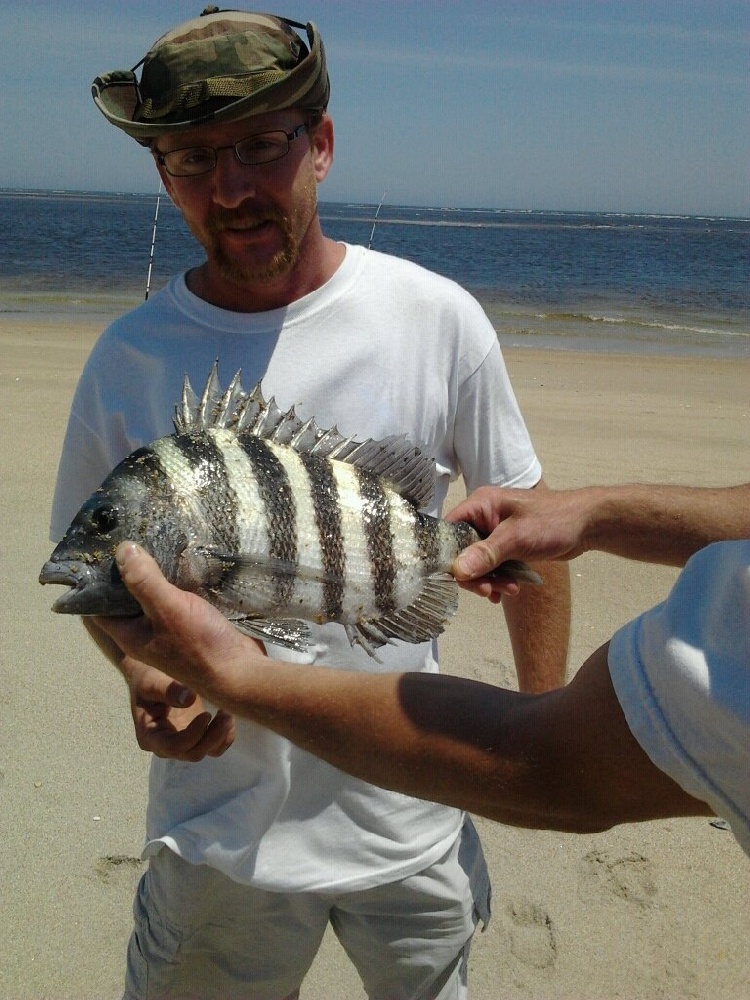

Unless bothered, the fish won't nibble on anyone. While the toothy sheepshead jaw may spook those unfamiliar with the fish, they pose no threat to humans at all. "It's a very good fight when you're fighting on the line, it's a really good catch, and it tastes very good," Martin told McClatchy News. Many Facebook users, including Nathan Martin, the angler who caught the fish, commented on how tasty these fish are, the Post reports. Despite being caught for sport, they are edible. The fish's front teeth are even coated with enamel, like the human incisors they resemble.Īnglers can find sheepshead fish swimming near the Atlantic coast from Massachusetts to Brazil. They'll eventually grow three rows of stubby, flat teeth in their upper jaw and two rows lining their lower jaw. Young sheepshead fish eat marine worms or any soft-bodied animal found within seagrasses until all their specialized teeth grow in, reported Scientific American's Becky Crew in 2013.Ī full-grown sheepshead will grow up to three feet long, reports Live Science. Because the sheepshead's diet consists of mollusks and crustaceans, their molars assist in crushing their prey's tough shells. The coastal critter was dubbed the sheepshead fish for the way its mouth resembles the muzzle of a sheep, the BBC reports. Must look elsewhere," wrote another user, per the Washington Post's Jennifer Hassan. "I think grandpa lost his dentures, and this fish found them," one Facebook user wrote. Photos of the catch shared to Facebook on August 3 prompted many comments from users astonished by the fish's set of jaws, reports Brandon Specktor for Live Science. The fish, also known as convict fish for their black and grey horizontally striped body and ability to steal bait, have large, beady black eyes and an uncanny grin that resembles a human smile. The next time you come across a road named Beaverdam Street or a town called Wolf Point, do some research into the origins of the name and you’ll uncover many interesting stories of that area.Last week, an angler casting a line off Jennette's Pier in Nags Head, North Carolina, caught a hefty and toothy nine-pound sheepshead fish ( Archosargus probatocephalus). An anhinga bird dove deep into the spring to snatch small fish from the water as the sheepshead darted away. Dozens of sheepshead swam past the thick windows. On a recent trip to Homosassa Springs State Park, I descended into the fishbowl, a metal glass tank suspended under the water in the spring. They are a tasty fish and must be at least 12 inches long to keep and there are limits to the numbers you can take from the fishery. On a Cocoa Beach pier, anglers drop their line around the pier’s pilings where sheepshead hang out.

Sheepshead habitat is rocky jetties, piers and in Florida it survives amongst mangrove roots. This North American species lives from Cape Cod through Florida, in the Gulf of Mexico to Brazil.

Nowadays, this fish is rare in the waters around Brooklyn. The teeth actually look like human teeth.
Terth of a sheepshead fish full#
The fish got its name because of its resemblance to a sheep’s mouth full of teeth. I incorrectly thought it was because the community raised sheep in colonial times, but the town was named for the abundance of an edible fish in the bay there called Sheepshead. When I grew up on New York’s Long Island, I knew of a town called Sheepshead Bay.


 0 kommentar(er)
0 kommentar(er)
